Now the ash has settled, the full story of what happened at Binna Burra can be told
Five years ago the unthinkable happened at Mount Robert – the rainforest burned.
You can now listen to The Australian's articles. Give us your feedback.
It was all too apparent why they were nervous atop Mount Roberts as the mercury climbed this week. The carpet of verdurous forest was sunbaked and smoke clung to the horizon, like it did five years ago when the mother of all bushfires roared up the escarpment and razed historic Binna Burra Lodge.
What transpired that day – September 8, 2019 – was something that wasn’t supposed to happen: the rainforest burned. Or so it seemed. And not only at picturesque Binna Burra on the elevated rim of the Gold Coast hinterland.
Undisturbed habitat reportedly went up elsewhere in southern Queensland and through northern NSW while the Black Summer unfolded, leaving an area the size of Victoria ablaze, at least 33 people dead nationwide and thousands of homes, farms and enterprises in ruins.
The dollar cost in property damage, lost production and earnings ran to an eye-watering $88bn by one count; an estimated one billion animals died. The smoky haze enshrouding Brisbane, Sydney, Canberra and Melbourne sent thousands to hospital in respiratory distress and was linked to additional deaths.
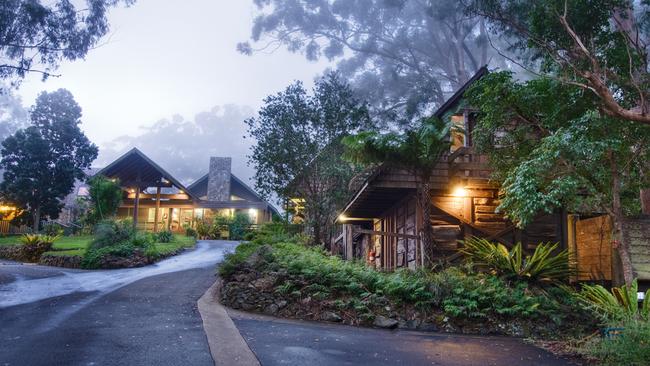
Binna Burra’s destruction was the harbinger of this and more, traumatic to those who fled or fought the flames, deeply shocking to a worldwide community of nature lovers who hold the virid retreat two hours’ drive from Brisbane close to their hearts.
The rebuild, half a decade on, is well advanced. The forest is back to its tangled best; barely a trace of the devastating fire is evident in the overgrown expanse of greenery. The road on the mountain is fixed, allowing bushwalkers, campers and holiday-makers to return in their pre-2019 numbers.
Work began this week on the new lodge, a flame-resistant structure featuring stone walls, fireplaces and recycled timber cladding in a nod to the beloved 1930s-vintage building it replaces.
Yet some scars remain. The uncertainty associated with climate change means Binna Burra can never recapture the charmed status it once commanded. As we will see, the conditions that gave rise to the disaster were extreme but far from unprecedented. A warming world guarantees the lethal confluence of drought, heat and scorching winds will occur more often, intensifying the fire danger. The financial risk cannot be insured against.
This story is one of human perseverance and hope, but also a testament to the resilience of the wondrous, World Heritage-listed rainforest in which the reborn hideaway nestles. The lessons of the fire continue to be absorbed by scientists, governments, emergency services, national park managers, eco-tourism operators and the never-say-die staff and residents who rose to the challenge of starting over at Binna Burra.
The one thing they all agree on: anyone who was there in the lead-up to that fateful day will never forget it.
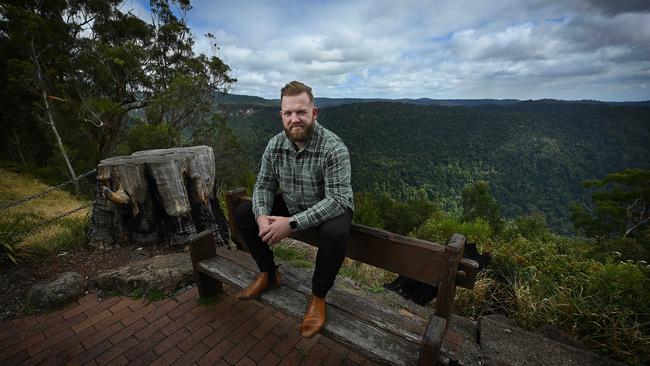
Leighton Pitcher was standing on the lodge’s bricked terrace, looking north to the plume of black smoke reaching high into an otherwise clear sky.
It was late morning on Friday, September 6, 2019, less than 40 hours before the firefront hit. Binna Burra was fully booked for the annual Coastal High 50 trail running event, with almost 300 guests packing the cabins sunk into tiers on the mountainside, the nearby Sky Lodge apartments and campground. The young man could discern the orange glow of flames at the base of the billowing column, but he wasn’t overly concerned.
Bushfires had come and gone before. Not once in its then 86-year history was the compound affected. The protective shield of rainforest always held, despite several close shaves. Still, there was something ominous about the conditions.
Pitcher had grown up on the mountain, and he couldn’t remember when it had ever been this dry. Barely a drop of rain had fallen for two months, practically unheard of in their corner of the Gondwana Rainforests World Heritage Area. The parched undergrowth crackled underfoot. Later, it would emerge that rainfall for the year to December 2019 had plunged by nearly half the average to 642mm. When a hot, howling northwesterly started up, gusting to 80km/h, the Forest Fire Danger Index soared.
The temperature on Mount Roberts, 1327m above sea level, is generally 4C or more cooler than on the Gold Coast beaches glistening below. By now, though, the mercury was 36C at Binna Burra. The FFDI had tipped into the severe category, exceeding 60 on the 100-point scale, the highest reading ever recorded in subtropical Queensland.
The blaze had erupted in the Sarabah Valley, a good 25km north, in suspicious circumstances the week before. Queensland police questioned two youths about breaching fire bans but took no action other than to issue them a warning, locals say. Come noon that Friday, September 6, Pitcher was back on the terrace, his anxiety rising. As marketing co-ordinator, his job was to keep the guests and 30 on-duty staff in the loop.
“That’s when the fire just took off, like a bomb had hit,” he recalls. “The cloud of smoke exploded. It took up the whole sky.”
For the first time, it occurred to him that they might have to leave. The duty manager, Scott Parker, was receiving regular updates from the Rural Fire Service. When he, too, ventured on to the terrace he was startled by the force of the hot wind, seemingly laced with spite from the flames.
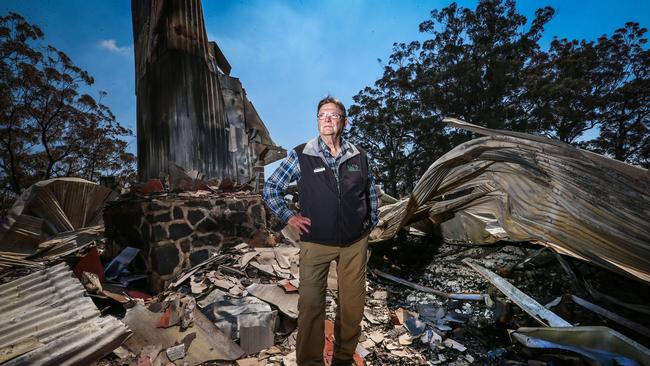
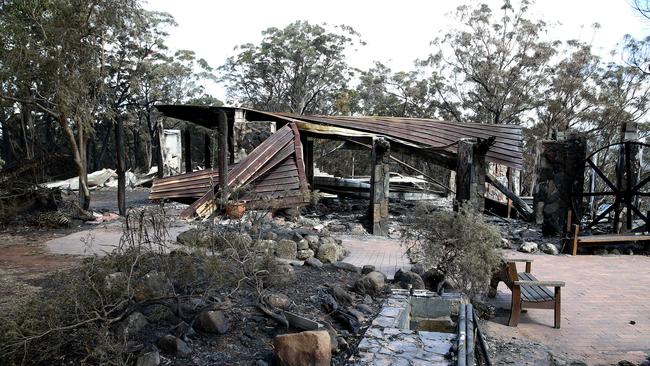
In a surreal scene, sprinklers were spraying the grounds and tallowwood slab walls of the lodge to guard against ember attack.
“You had moments when the wind would hit you hard in the face, blowing back your hair, and you could feel the heat rising through the valley,” says Parker, 35. “Then the sprinklers would spin around and all the water would blow up into the sky. It was pretty clear the fire was coming.”
He was in on the decision to evacuate, taken unilaterally by the Binna Burra team about 3pm. Even then, people felt they would be back before too long. Chef Angus Blanch was busy transferring pre-prepared food between kitchens to keep it from spoiling overnight, so certain was he that the emergency would pass. “I remember being slightly annoyed … I was going to be behind in my work on Saturday,” the now 35-year-old says. “That’s how inconceivable it was that the place would actually burn.”
Pitcher, 29, helped do a last check of the rooms, chalking the doors to show they were clear. In Jakarta on business, Binna Burra chairman Steve Noakes was trying to book a flight home. When he made his bleary-eyed way up the mountain on Saturday his wife, Suzanne, was on the fireground with the volunteer brigade from Beechmont, near where they lived. She told him their home was likely to go.
Water bombers made one run after another but there was no containing the conflagration, not in these conditions. The fast-moving front burst out of Sarabah Valley, on to Lahey’s Tabletop, entering what Wil Buch calls the “launching ramp” to Binna Burra, crowning in the forest canopy. He’s the veteran chief ranger of Lamington National Park and had spent years conducting hazard reduction burns to seal nine of the 10 known “fire runs” through the reserve.
The open path, rich in fuel loads, wove a complicated course across the landscape, jinking between private property and public holdings controlled by an array of government instrumentalities, defying Buch’s best efforts to wrangle all the permits required to burn during the brief, safe window in late winter-early spring. As Murphy’s law dictates, the fire took that track.
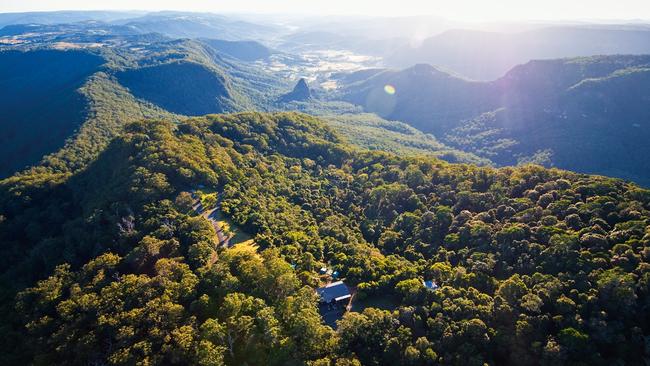
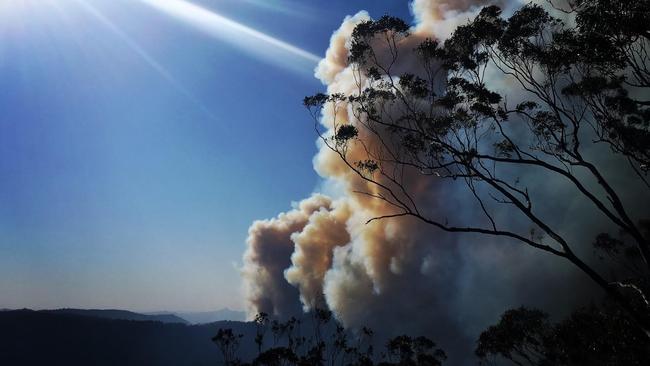
From the tabletop, it descended into a heavy bark forest and jumped the Coomera River. Five homes were destroyed in Timbarra Drive, Beechmont. As night approached on Saturday, the decision was made to pull the RFS-controlled fire crews out. The danger that they could be trapped on the mountain was too acute.
But Buch, with the approval of his bosses in the national park service, defied the order with 10 rangers who stayed to defend their depot immediately below the lodge. They back-burned and poured 50,000 litres of water on to the flames, saving the facility. Mindful of being cut off, Buch called in a 30-tonne excavator to remove fallen trees from their only escape route, the single-lane road.
About 2am Sunday he saw Binna Burra go. The 24 Sky Lodge apartments, arranged in four blocks, survived by virtue of their robust, concrete construction – though one floor of units was damaged by water bombing, allowing fire to penetrate.
The wooden lodge and adjoining cabins didn’t stand a chance. “It was unbelievably sad,” says Buch, 63. “The lodge had an iconic, 90-year association with Lamington. For it not to be there created this huge feeling of bereavement and grief. Many of us are still suffering.”
Noakes, 68, didn’t have to be told the heart and soul of Binna Burra had been ripped away: the TV news was running aerial footage of the charred ruins. He nearly cried when he saw the extent of the destruction.
Groom’s Cottage – the first building raised on the site – the adjoining tea house, a few safari tents and the barn were all that remained. Noakes still struggles to describe how he felt. He pauses, his voice suddenly husky.
“This is a bit surprising … that I’m so emotional, actually,” he says quietly. “Those 48 hours during and after the fire were terrible. We had 70 people on staff, now without jobs, thousands of bookings, customers trying to find out what was happening and international media attention. It was like being hit by one thing after another.”
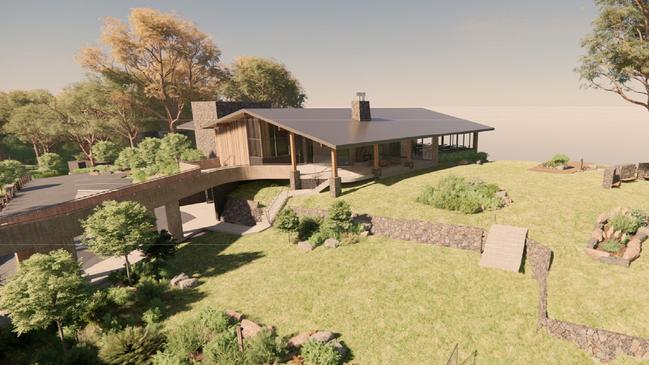
Now that the ash has settled, the full story of what happened at Binna Burra can be told. Fittingly, the rainforest is at the centre of it. In its post-fire assessment, the Queensland government said 658ha of lowland subtropical and dry rainforest burned in Lamington National Park, about 9 per cent of the habitat. The losses across the border were reported to be nothing short of staggering: more than 300,000ha or 37 per cent of all NSW rainforests were deemed by the state’s Environment Protection Authority to have gone up during the Black Summer.
The implications are grave. Unlike Australia’s expansive eucalypt forests, which rely on fire for renewal, the rainforest didn’t evolve to burn. The trees are thin-skinned compared with the barky gum varieties and exist in a more closed ecosystem. Take to the walking trails around Binna Burra and you will experience the difference: the rainforest canopy unspools like an emerald roof, filtering the daylight, which in turn inhibits undergrowth. Apart from a blanket of nutrient-rich leaf litter, the forest floor is remarkably free of combustible weeds and shrubbery.
Once compromised by significant tree loss, however, the canopy does not readily recover. Invasive low-growing species such as lantana and wild tobacco can take hold. The spectre of more intense and frequent bushfires driven by climate change is rightly seen by scientists as potentially lethal to the intricate rainforest ecology, among the most biodiverse known.
Offsetting this are its natural flame-resistant qualities. The dearth of direct sun beneath the canopy and the moist, decomposing litter create a humid microclimate that, along with the absence of dry fuel on the forest floor, is supposed to suppress fire. Ecologists say the ruptions “trickle through” the outer edges of true rainforest – that is, unburnt or never-logged terrain – and soon peter out.
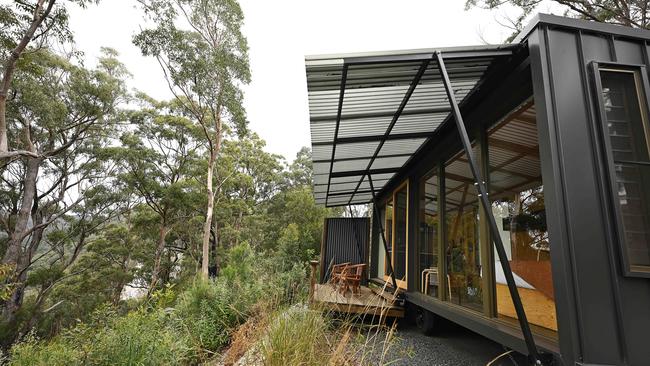
But what if climate change had up-ended the natural balance? Could the 2019-20 blazes have been so extreme that they overwhelmed the rainforest’s intrinsic defences? University of Queensland ecologist Rod Fensham, a professor in its school of the environment and faculty of science, set out to solve the mystery of why Binna Burra burned, drawing on Buch’s on-the-ground experience. And as we report in the news pages, his findings suggest Australia’s wet tropical rainforests are more robust than many experts – including him – formerly believed.
“At the time, there were people like me saying this was a catastrophic event and we lost a lot of undisturbed rainforest as a result of the fires,” he tells Inquirer.
“In fact, that did not happen. Yes, we lost some rainforest. But not nearly as much as we first feared. It turns out the rainforest did its job … it is brilliant at putting out fire, even big, dangerous fires like the one that hit Binna Burra.”
Fensham cautions that this does not necessarily apply to habitat subjected to past logging, as was much of the protected forest around the lodge compound. What’s needed, he argues, is a more complete understanding of what constitutes true rainforest. The transition belt from the fire-loving eucalypt woodlands, known as wet sclerophyll forest, is often confused with rainforest when it behaves quite differently in fire conditions.
The towering brush box tree, a rainforest species growing to more than 20m, is also found there, flanked by mid-stories of vegetation and gum trees. Fensham and his co-researchers discovered that three times more wet sclerophyll forest than rainforest burned around Binna Burra. If not for “past disturbance” of the rainforest and lantana intrusion, the gap would have been even wider, they wrote in a recently published journal paper.
From his base in Mullumbimby, northern NSW, fire and vegetation ecologist Andrew Baker has been comparing notes with the UQ man on the blaze that ripped through nearby Nightcap rainforest in November 2019, blackening an area of about 6000ha.
The story there is similar in his telling: “We’ve found that the fire followed extremely closely the extent of where you had sclerophyll trees in the canopy … where it extended into pure rainforest was very rare, so it does confirm a lot of those findings further north.”
Baker, of Southern Cross University, says “a lot of effort” went into widening the definition of rainforest in the 1970s and ’80s, as the expansion of Australia’s national park estate took off. “So we’re now in a situation where we’re getting fires that may well have been happening for millennia, still following the same pathways, but raising alarm bells that our rainforests are burning,” he says, identifying an unintended consequence of the policy.
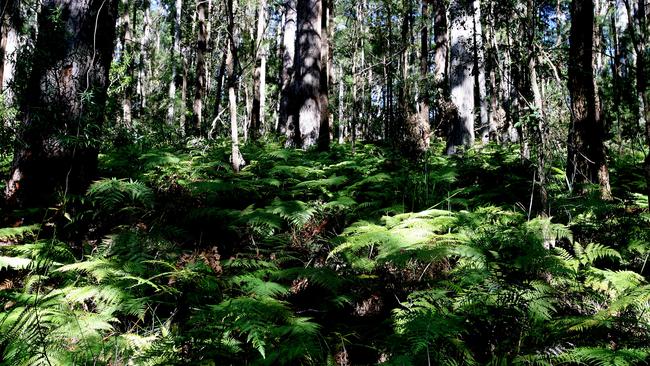
This is one of the many lessons imparted by the Binna Burra experience. Others go to the human factor. Noakes, a one-time university student union leader who cut his teeth as a tourism operator before branching out into resort development, professed on the day of the fire that they would rebuild. He had no idea how.
The $3m insurance payout barely covered the cost of refunds for booked accommodation and clearing the lodge site. More than a year would pass before repairs to the access road, wrecked by landslides and subsidence, were completed by the state government. Selling was never on. Although the business is incorporated as an unlisted public company, it functions like an old fashioned co-op, with no individual investor permitted to own more than 2.5 per cent of the stock. The tightly held shares are often passed down from generation to generation within a family. No way they’d agree to let go of Binna Burra, such is the pull of the place.
“In my mind, never,” Noakes says of the options to sell or walk away. “In my mind, I always had a vision of hope.”
He’s proud new jobs were found for every displaced staff member. Former duty manager Parker is enjoying life as a systems specialist for a Gold Coast holiday park. Blanch, who surrendered his chef’s hat to retrain as a gardener, is among those who have returned in new roles: he’s involved in cutting fire breaks below the retreat. Pitcher has been promoted to sales and marketing manager and works alongside his wife, Tilsa, who is in accounts. They’re both looking forward to moving into new offices on the ground floor of the soon-to-open welcome centre.
The work continues apace. The replacement lodge is due to be completed by early 2026 with the new cabins, while the refurbished Sky Lodge apartments are back in business. The accommodation stocks have been bolstered by six “tiny wild houses” overlooking the majestic Bellbird clifftop. They’re mounted on wheels – just in case.
As for Buch, he was busy this week preparing for a big and long-overdue hazard reduction burn around the site, conditions permitting. Smoke from test runs on the surrounding ranges hung heavy in the air. On Monday, the temperature hit an unseasonal 31C, reviving punishing memories of spring, 2019. They’ll never be far away at Binna Burra.



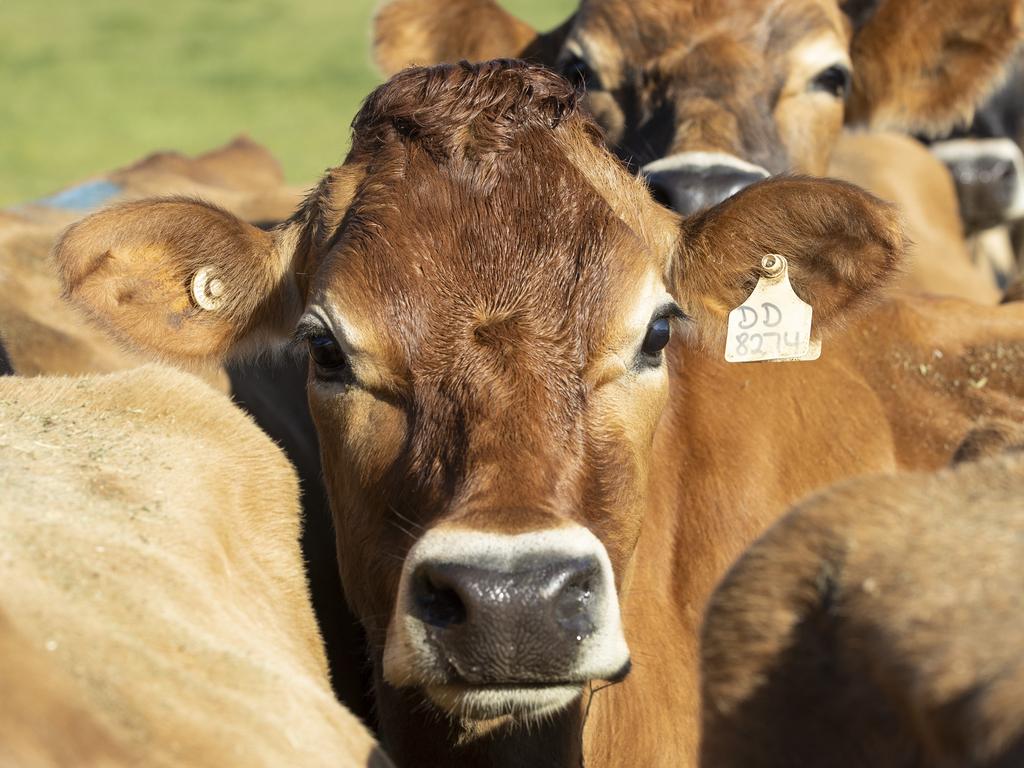

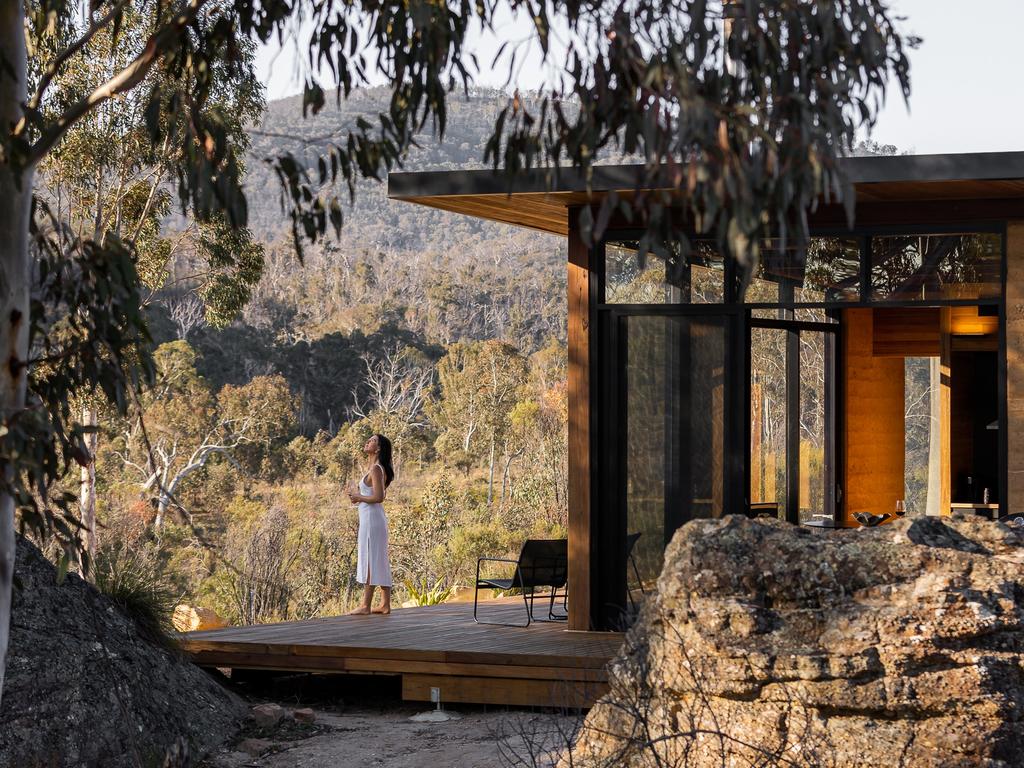
To join the conversation, please log in. Don't have an account? Register
Join the conversation, you are commenting as Logout